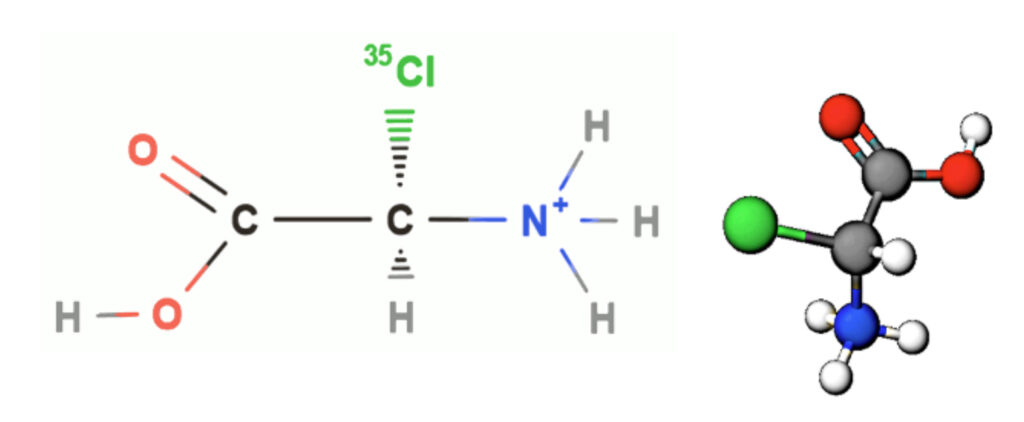What is InChI?
InChI is a structure-based chemical identifier, developed by IUPAC and the InChI Trust. It is a standard identifier for chemical databases that facilitates effective information management across chemistry. InChI and InChIKey are open standards. They use unique machine readable strings to represent, store and search chemical structures. All the software and algorithms related to them are open source.
InChI identifiers describe chemical substances in terms of layers of information – the atoms and their bond connectivity, tautomeric information, isotope information, stereochemistry and electronic charge. The InChIKey is a fixed length (27 character) condensed digital representation of the InChI that is not designed to be human-understandable.

/

InChI is used by most of the large chemical databases and software applications handling many millions of chemical structures.
InChI enables the linking and interlinking of chemistry and chemical structures on the web and computer platforms.
Key publications
The key publication to read and cite is “InChI, the IUPAC International Chemical Identifier” (Stephen R Heller, Igor Pletnev, Stephen Stein and Dmitrii Tchekhovskoi, J. Cheminformatics, 2015, 7:23)
For the best survey of InChI use and publications, please read Wendy Warr’s excellent summary article “Many InChIs and quite some feat” (Warr, W.A., J. Comput. Aided Mol. Des., 2015, 29: 681. https://doi.org/10.1007/s10822-015-9854-3)
See also the 1.06 paper:
InChI version 1.06: now more than 99.99% reliable.
Goodman, Jonathan M.; Pletnev, Igor; Thiessen, Paul; Bolton, Evan; Heller, Stephen R.
J Cheminformatics, 2021, 13:40
DOI: https://www.doi.org/10.1186/s13321-021-00517-z
YouTube Videos
Where’s InChI?
Getting and using InChI – software and web demo
Resources – use cases, how-to’s
Extending InChI
We are currently working on the scientific definition and technical application of several extensions and applications to the InChI Standard. These are managed through Project Groups.
History of InChI
1999: Steve Heller initiated a proposal at the National Institute of Standards and Technology (NIST) for a public domain structure representation standard for the NIST databases, along with Steve Stein who was the initial designer and architect for the project.
2000: from a meeting with a wide range of users of chemical nomenclature including database providers, patent officials, international trade representatives, et al, under the direction of Alan McNaught, it was decided that InChI would be an IUPAC initiative to meet the needs of the chemical and related communities.
2001: the IUPAC Chemical Identifier project began in collaboration with the US National Institute of Standards and Technology (NIST). The aim was to devise a computer based algorithm yielding a unique label for any chemical structure, regardless of how it was represented (on screen).
2005 (April): version 1 of the IUPAC International Chemical Identifier (InChI) was launched. The development and associated programming work was predominantly carried out by Dmitrii Tchekhovskoi.
2008: a shorter hash key version of InChI, known as InChIKey was developed by Igor Pletnev. This alternative format is much more suitable for use in search engines and offers many new possibilities for software applications.
2009 (January): standard versions of InChI and the InChIKey were released, which took the original algorithm with its many variable parameters and fixed them so that interoperability between databases and resources with InChIs could be achieved.
2009 (July): the InChI Trust was formed. The 2009 Board of Directors consists of 8 members: The Royal Society of Chemistry • Nature Publishing Group • Elsevier Properties SA • Thomson Reuters • John Wiley & Sons • FIZ CHEMIE • Taylor & Francis • IUPAC.
2011: version 1.04 of the InChI software was released as well as an InChI Certification Suite which is designed to check the correct installation of the InChI software. Certification logos for correct installations as well as InChI Trust member and supporter logos are provided by the InChI Trust.
2017: version 1.05 of the InChI software was released, along with version 1.00 of the Reaction InChI (RInChI).
2020: version 1.06 of the InChI software was released.
2024: InChI codebase moved to GitHub, and the new version 1.07 approved
